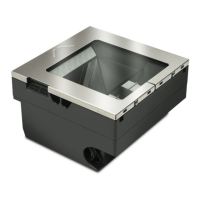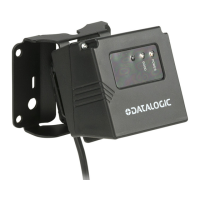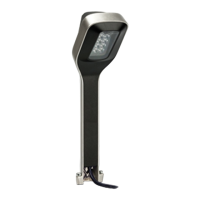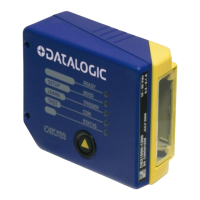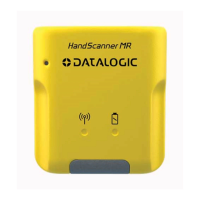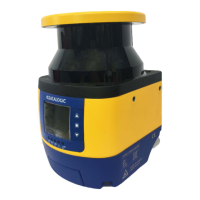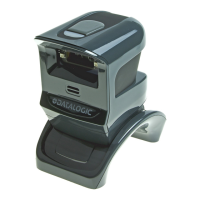Product Reference Guide
55
Power-Up/Selftest
Power-Up Selftest begins when power is applied. The scanner’s software immediately begins the
testing sequence to verify that all systems are functioning properly. This routine, which only
takes a few seconds, checks all the functions of the scanner, EAS deactivation system, scale,
remote scale display and interface prior to indicating that it is ready for operation.
NOTE
A tone indicating Selftest is complete is a configurable feature. See the
Chapter 7, "Power-up Beep Control"
in this manual.
Error Reporting
If a fatal error is detected during Selftest or operation, the unit will not advance to Normal
Operation Mode. Selftest diagnostics will cause the unit to sound a long, low tone and/or
display an error message on the Health & Status Indicator indicating where the failure occurred.
These messages are coded to assist the repair technician in identifying the failed component. If
the error is with the EAS deactivation system, the bottom-most LED will flash red. If an error is
indicated, make note of it and contact your supervisor or technical support representative. A
table containing descriptions of these error codes is included in
Chapter 4, Problem Isolation.
If a non-fatal
1
error is detected (such as a EAS deactivation system error), the unit will sound a
long, low tone and display a number on the Health &
Status Indicator. The unit will advance to
Normal Operating Mode, but performance may be affected until a correction or repair is made.
Operational Configuration
Once Selftest diagnostics have been successfully run, a tone is emitted (if configured to do so,
and the unit enters an operational configuration state. The scanner or scanner/scale will
automatically load your specific interface settings which are required to communicate with the
host system. There are two conditions that must be met before the unit can enter Operating
Mode:
• No bar code label can be in the scan volume while the un
it is in this state. Progress is
halted until the label has been removed, thereby ensuring that no extraneous bar code data
is sent to the host.
• If your scanner has a scale, the scale cannot be
in motion (usually caused by excessive
vibration in the checkstand) for this test to succeed. A “Scale in Motion” status will be
indicated by displaying a period and the applicable weight unit (lb
or
kg
) that is selected.
• The scale must be able to “capture” zero weight. The display will be seen if
there is a weight on the platter at power-up. Removing the weight or pressing the Sscale
Z
ero Button should allow the scale to find zero.
• When the scanner or scanner/scale completes its S
elftest successfully, it emits a tone (when
configured to do so) and enters Operating Mode.
Operating Mode
Operating Mode includes Normal Operation (scanning, EAS deactivation and weighing) and
Sleep Mode. These two modes are most commonly observed by the user/operator.
1. Scanner behavior under non-fatal error conditions is configurable. See Chapter 7, Programming for more details.
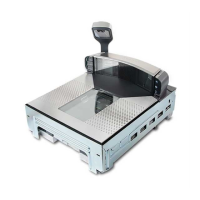
